I would like to be the first to say that I love Greek mythology. The stories of Heracles, Jason the rivalry between Hector and Achilles just to name a few are all stories that helped shape my imagination over the years. Hector and Achilles battles are perfectly reimagined in Dan Simmon's novel titled Ilium, a book which I recommend everyone to read. Don't read the sequel Olympos though because it is so underwhelming. I finished reading Ilium twice, that is how good it is.
The ancient Greeks accepted these myths as part of their history. They used these lores to explain natural phenomenon, cultural activities, living habits - and to ascend the reputation of their leaders by linking their lineage to those of heroes and immortals in these stories.
Long before the age of heroes was the Golden Age led by the Titans, descendants of the Primordials. In this age, humans and Titans lived together in harmony, the humans need not to work as everything was provided to them, from protection to entertainment to food. However, a Titan named Prometheus defies the other Titans and decided to give fire to humanity - which enabled humans to progress into a civilisation. This act, amongst a few others, sets into motion an upheaval by the younger immortals named the Olympians, lead by Zeus.
The Titans of Cronus, Rhea, Oceanus, Tethys, Hyperion, Theia, Coeus, Phoebe, Mnemosyne, Themis, Crius and Iapetus were overthrown by Zeus, Hera, Poseidon, Athena, Demeter, Apollo, Artemis, Ares, Hermes, Aphrodite, Hephaestus & Hestia. Prometheus was tormented for eternity due to his offence. The 12 Olympians then became the rulers with Zeus up top. This new age was known as the Silver age. Eventually there came a time where these deities and mortals mingled freely, and wars were aplenty. This was known as the Bronze age where men were hardened and tough, like a bronze, where war and battles were their sole purpose of life. Then came the Heroics age, where inspiring and sometimes tragic heroes came to be. These heroes are not divine, rather they are mere mortals with superhuman abilities. It was told that eventually Prometheus was freed by the hero Heracles, bringing the story full circle. Then, the immortals and heroes eventually left the earth, leading to the Iron Age where brother fight with brother, might makes right and bad men uses lies to be thought good.
Tolkien borrows this concept in his writing as well. The Lord of the Ring and The Hobbit for instance, occurs during The Third Age. You'd be surprised to read just how detailed the histories of Middle Age are - those stories are just two from the many tales from the world that he had created.
The Parthenon is a shrine dedicated to Athena Parthenos, daughter of Zeus, and one of the 12 Olympians. It was built nearly 2500 years ago by ancient architects Ictinus and Callicrates. The sculptures were done and led by Phidias. Phidias also sculpts the statue of Zeus at Olympia, which was one of the Seven Wonders of the World. The Parthenon is one of the symbols of western civilisation.
The ancient Greeks accepted these myths as part of their history. They used these lores to explain natural phenomenon, cultural activities, living habits - and to ascend the reputation of their leaders by linking their lineage to those of heroes and immortals in these stories.
Long before the age of heroes was the Golden Age led by the Titans, descendants of the Primordials. In this age, humans and Titans lived together in harmony, the humans need not to work as everything was provided to them, from protection to entertainment to food. However, a Titan named Prometheus defies the other Titans and decided to give fire to humanity - which enabled humans to progress into a civilisation. This act, amongst a few others, sets into motion an upheaval by the younger immortals named the Olympians, lead by Zeus.
The Titans of Cronus, Rhea, Oceanus, Tethys, Hyperion, Theia, Coeus, Phoebe, Mnemosyne, Themis, Crius and Iapetus were overthrown by Zeus, Hera, Poseidon, Athena, Demeter, Apollo, Artemis, Ares, Hermes, Aphrodite, Hephaestus & Hestia. Prometheus was tormented for eternity due to his offence. The 12 Olympians then became the rulers with Zeus up top. This new age was known as the Silver age. Eventually there came a time where these deities and mortals mingled freely, and wars were aplenty. This was known as the Bronze age where men were hardened and tough, like a bronze, where war and battles were their sole purpose of life. Then came the Heroics age, where inspiring and sometimes tragic heroes came to be. These heroes are not divine, rather they are mere mortals with superhuman abilities. It was told that eventually Prometheus was freed by the hero Heracles, bringing the story full circle. Then, the immortals and heroes eventually left the earth, leading to the Iron Age where brother fight with brother, might makes right and bad men uses lies to be thought good.
Tolkien borrows this concept in his writing as well. The Lord of the Ring and The Hobbit for instance, occurs during The Third Age. You'd be surprised to read just how detailed the histories of Middle Age are - those stories are just two from the many tales from the world that he had created.
The Parthenon is a shrine dedicated to Athena Parthenos, daughter of Zeus, and one of the 12 Olympians. It was built nearly 2500 years ago by ancient architects Ictinus and Callicrates. The sculptures were done and led by Phidias. Phidias also sculpts the statue of Zeus at Olympia, which was one of the Seven Wonders of the World. The Parthenon is one of the symbols of western civilisation.
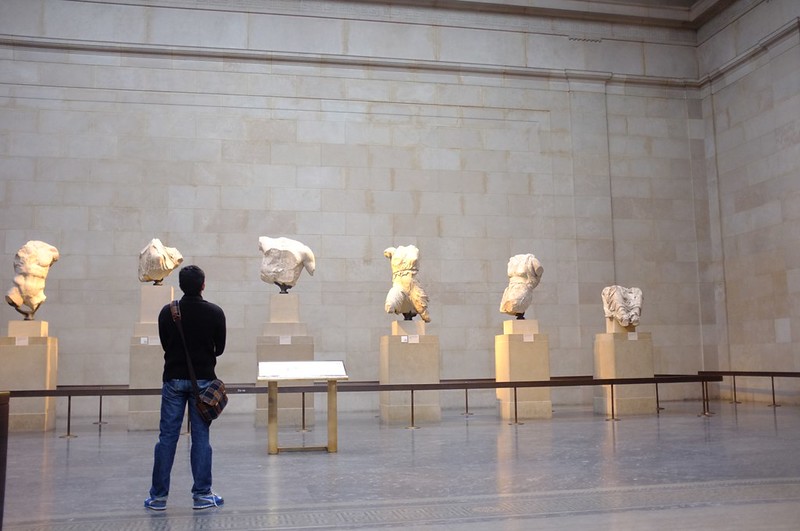
For the life of me I thought that the Greeks and the Romans are one and the same. After all most of their myths, art and architecture overlaps. For example Zeus and Heracles are called Jupiter and Hercules in Roman mythos respectively. The Parthenon looks like it can exist during the same period as The Colosseum. Turns out the Romans came and conquered Greece hundreds of years after the death of Alexander the Great - the Greek's greatest conqueror. Assimilation of both cultures came to be when Greek was absorbed into the Roman Empire.
The Colosseum was built roughly 500 years after completion of the Parthenon so the Roman came to rise after the Greek.
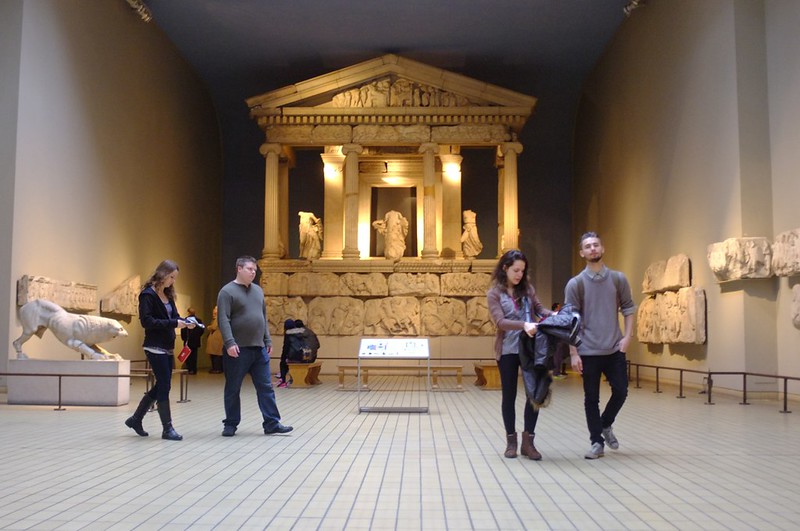
The parthenon was built during the leadership of Pericles, arguably the most acclaimed Greek leader of his era. He led Athens via democracy. Demos = people, whereas kratos = power. Thus democracy (Demos+Kratos) = people power.
Pericles wanted to built the Parthenon and via people power, the people wanted it as well. Since it was built on democracy and subsequently public money, the expenditures for building it was made public since the people had the right to know. It costs about 12,000 kg worth of silver.
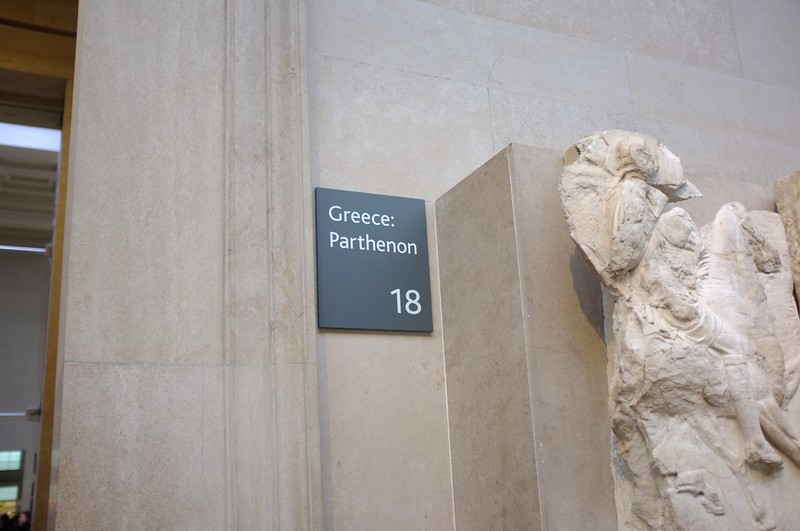
These Greek artifacts are displayed here in the British Museum, . I could seriously spend a whole day here in the museum and not be bored. Everyone visiting London should visit this place. Entrance is free of charge.
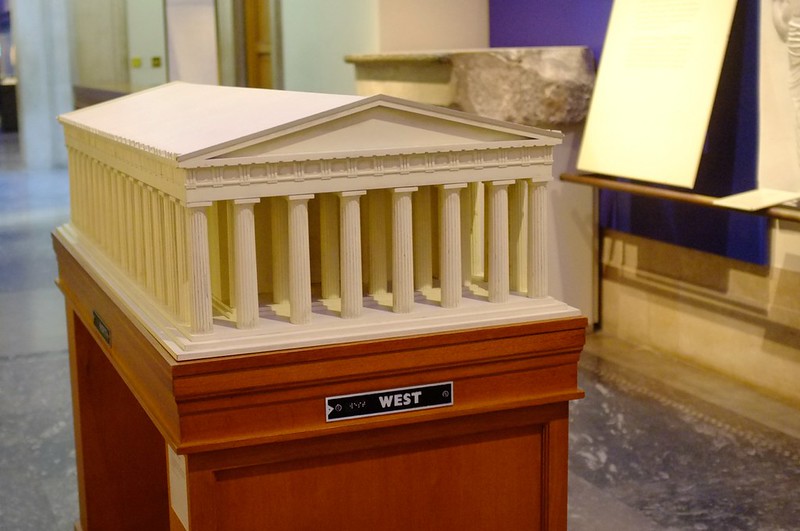
A replica of the Parthenon on dispay. A year after the Parthenon was completed, the Greek goes to war with the Spartans. The Spartans won, and the parthenon was converted into an army barrack. The place had also been converted to a mosque during the time of the Ottoman empire.
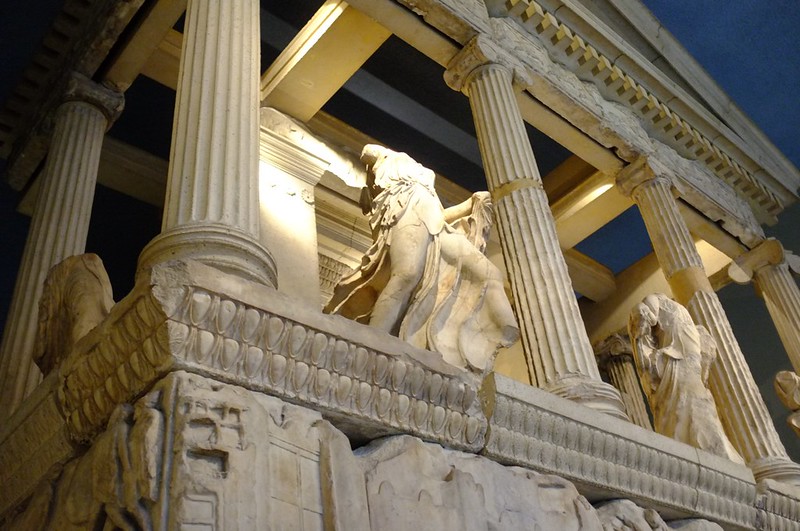
The parthenon was built during the leadership of Pericles, arguably the most acclaimed Greek leader of his era. He led Athens via democracy. Demos = people, whereas kratos = power. Thus democracy (demos+kratos) = people power.
Pericles wanted to rebuilt the Parthenon and via people power, the people wanted it as well. Since it was built on democracy and subsequently public money, the expenditures for building it was made public since the people had the right to know. It costs about 12,000 kg worth of silver. The building was completed in 9 years.

Duveen Gallery, British Museum. Many Greek myths are kind of weird when you read about it. For example, Athena was born from Zeus's forehead. Zeus had a terrible headache and to relieve it, Ares, another of the 12 Olympians cleaved Zeus's head with his axe. Athena leaped out from his head.

And of course, a common theme in Greek mythology is also the downfall of corrupted leaders. Uranus, the personification the the sky itself, was toppled by his son, the Titan Cronus, which in turn was toppled by the Olympian Zeus, son of Cronus and Lord of the Sky and Thunder.
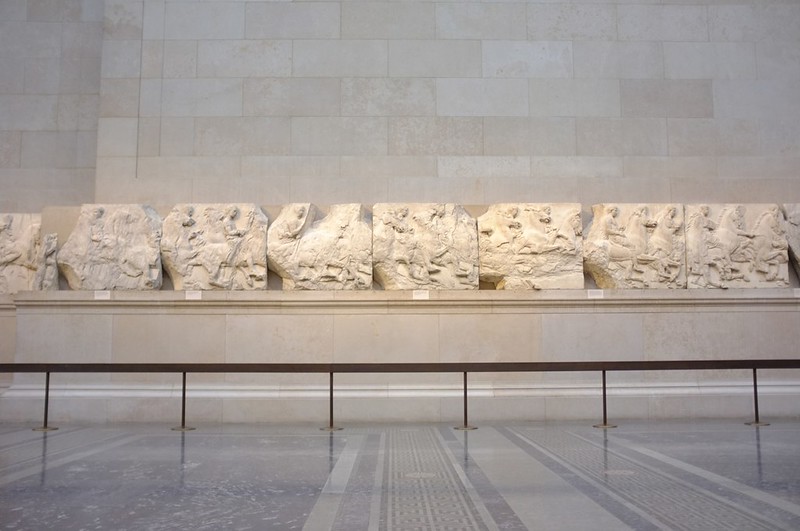
The Elgin Marbles designed by Phidias. In the carvings, mere mortals were depicted to be standing alongside the immortal Olympians. It also depicts mortals with morality of justice over injustice and civilisation beating the barbarians.
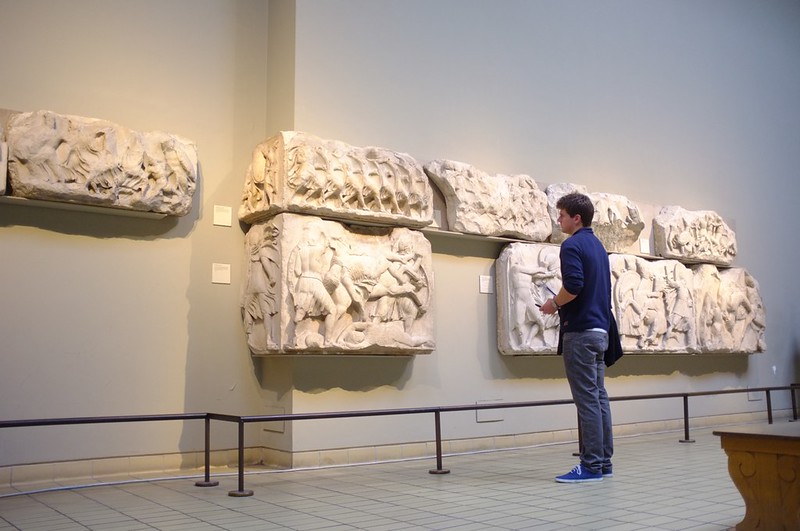
The original Parthenon sits atop Acropolis in Athens. It was nice to visit and see artifacts of a once grand civilisation, and witness with my own eyes a ruin we needlessly destroyed.
Inspirations, passions & motivations.
1. I got a bit carried away with explaining the Greek myths didn't I? It is a fascinating topic I must say.
2. Do watch the excellent documentary Secrets of the Parthenon. Much of the info on the building came from this documentary. At the end of the day, like the pyramid you would ask yourself - "How did these ancient people built these things?"
3. Olympos XII from the Digimon series had some wicked design for the Olympians.. But they use the Roman names for the members so Zeus are called Jupiter, Poseidon as Neptune, Athena as Minerva and so on.
4. I must say my love for Greek mythology rekindled when I read Ilium by Dan Simmons several years ago. It is a recreation of the Trojan War from Homer's Iliad. It eventually becomes a crazy story and an amalgam of an uneducated post apocalyptic human society, the adventure of the only man on Earth left capable of reading, the rivalry between Hector and Achilles, the literature loving robots from Jupiter, Martians who somehow became Greek deities with quantum powers and a sprinkle of Shakespeare particularly The Tempest. And all these crazy elements somehow make sense in this world that he had created.
5. Immortals by Tarsem Singh is not good, both visually and narratively. A shame because his previous film The Fall is a visual feast.
